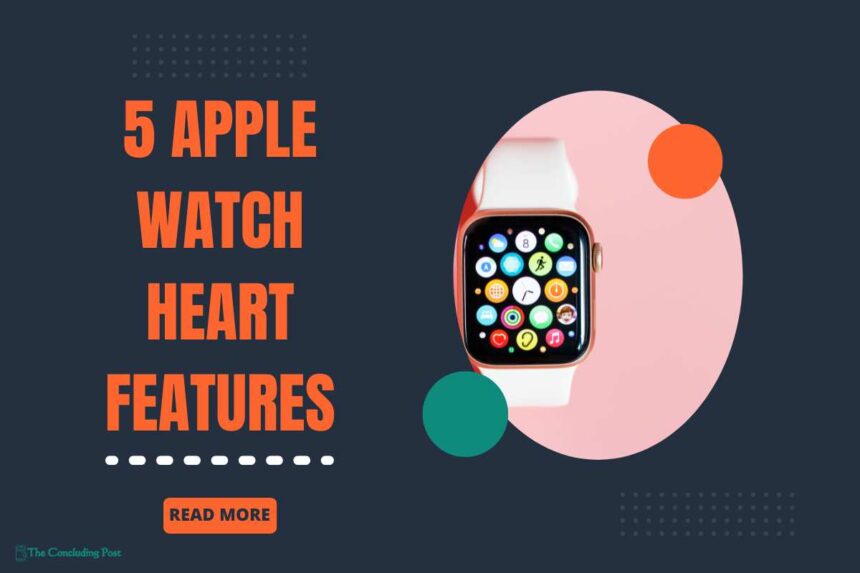The Apple Watch has transcended its role as a mere smartwatch to become a potent health companion, equipped with features that not only track our daily activities but also monitor vital health metrics, potentially saving lives in the process. In this comprehensive exploration, we’ll delve into the remarkable health features of the Apple Watch, accompanied by real-life stories that highlight its life-saving capabilities.
1. Abnormal Heart Rate Detection
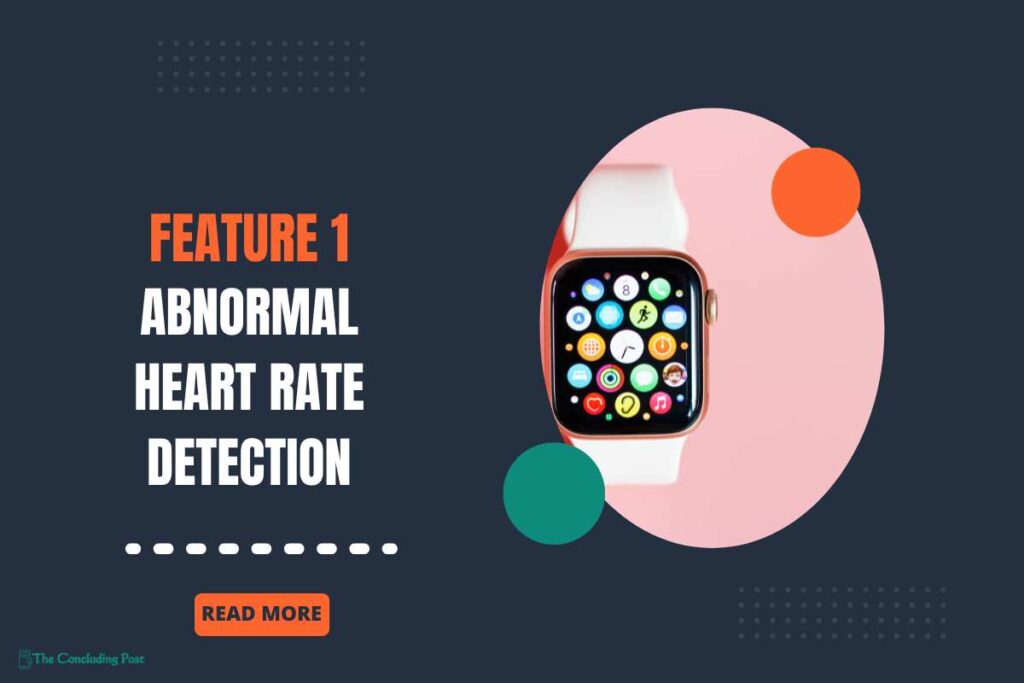
The ability of the Apple Watch to monitor heart rates for abnormally high or low readings during rest periods has been instrumental in detecting underlying health issues. This feature, often referred to as High Heart Rate and Low Heart Rate notifications, has garnered widespread recognition for its role in alerting users to potentially critical health situations.
Users have the flexibility to adjust notification thresholds manually, ensuring that they receive alerts tailored to their specific health needs. This level of customization empowers individuals to take proactive steps toward managing their cardiovascular health effectively.
How to use: These heart rate notifications seamlessly integrate with the Apple Health app, providing users with comprehensive insights into their overall well-being. By accessing the Heart section within the app, users can fine-tune notification settings and review historical heart rate data, facilitating informed decision-making regarding their health.
2. Atrial Fibrillation Detection
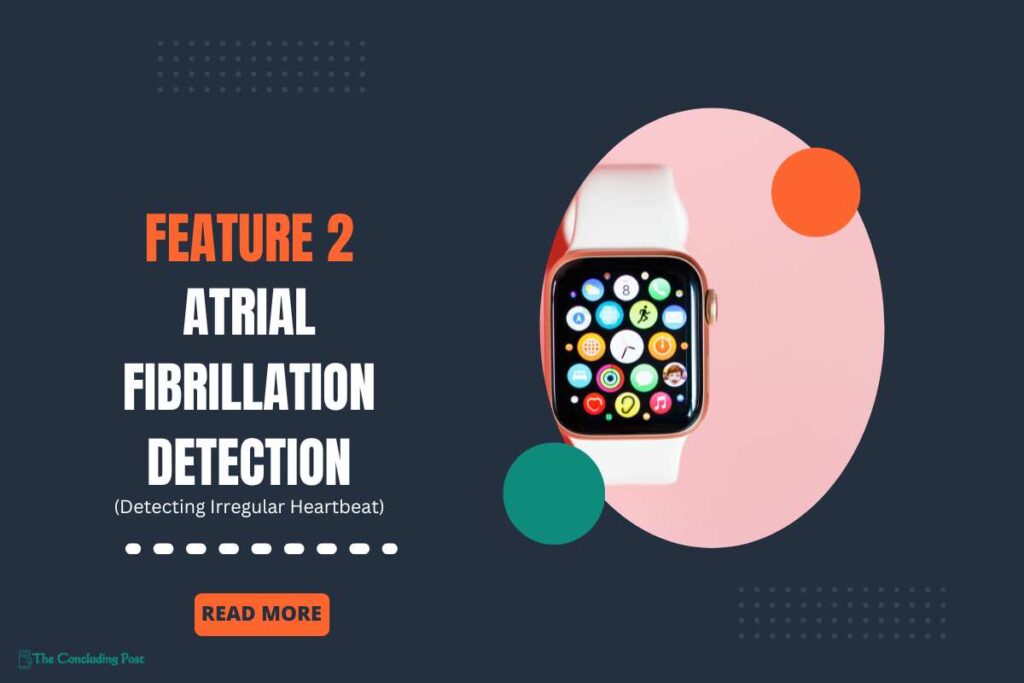
Atrial fibrillation (AFib) is a prevalent cardiac arrhythmia characterized by irregular heartbeats, which can significantly increase the risk of stroke and other cardiovascular complications if left untreated. The Apple Watch’s ability to detect AFib through its advanced sensors has revolutionized early detection and intervention strategies for this potentially life-threatening condition.
How it checks: By continuously analyzing heart rate data, the Apple Watch can identify irregular heart rhythms indicative of AFib and promptly notify users of potential cardiac abnormalities. This real-time monitoring capability empowers individuals to seek medical attention promptly, thereby mitigating the risk of adverse health outcomes associated with untreated AFib.
Yes FDA has also approved this feature: In addition to detecting AFib through irregular rhythm notifications, certain models of the Apple Watch are equipped with an FDA-cleared electrocardiogram (ECG) feature. This groundbreaking technology allows users to record a 30-second ECG directly from their wrist, providing valuable diagnostic information that can aid healthcare professionals in assessing and managing cardiac arrhythmias.
3. ECG (Electrocardiogram)
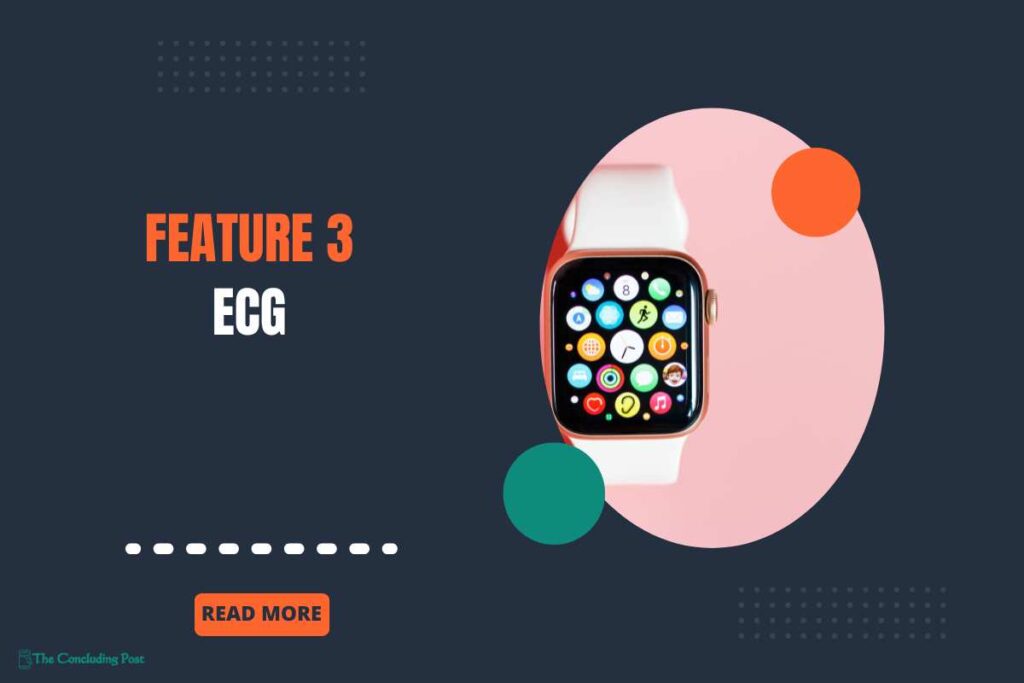
The introduction of the ECG feature on select models of the Apple Watch represents a major advancement in personal health monitoring technology. By leveraging sophisticated sensors and algorithms, the Apple Watch can capture high-fidelity ECG recordings directly from the user’s wrist, providing valuable insights into cardiac health and facilitating early detection of arrhythmias.
How it works: The ECG app on the Apple Watch offers a user-friendly interface that guides users through the process of taking an ECG recording with ease. By following simple on-screen instructions, individuals can initiate a 30-second ECG recording, during which the watch’s sensors capture detailed electrical signals from the heart.
Yes, it has proved to be accurate in Clinical Trials: Despite its compact size and portability, the Apple Watch ECG feature delivers clinical-grade accuracy comparable to traditional ECG machines found in medical settings. This level of accuracy is crucial for ensuring reliable diagnostic information and facilitating effective communication between users and healthcare providers.
Integration with Health Records: ECG recordings captured on the Apple Watch can be seamlessly integrated with the user’s electronic health record (EHR) through the Health app. This integration enables healthcare professionals to access and review ECG data remotely, facilitating timely clinical decision-making and enhancing patient care coordination.
4. Cardio Fitness
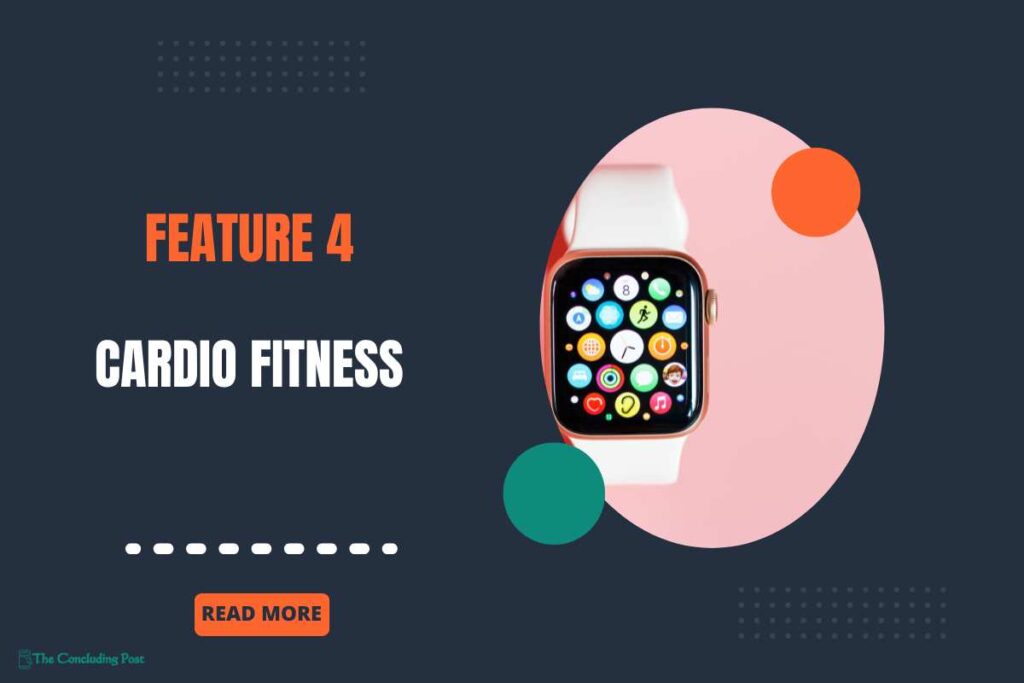
The Apple Watch’s Cardio Fitness feature provides users with valuable insights into their overall cardiovascular health and fitness levels. By leveraging advanced algorithms and sensor technology, the Apple Watch calculates a personalized Cardio Fitness score, which serves as a comprehensive indicator of aerobic capacity and physical fitness.
VO2 Max Estimation: The Cardio Fitness score generated by the Apple Watch is based on the user’s VO2 Max, a widely recognized measure of aerobic fitness. VO2 Max represents the maximum amount of oxygen that an individual can utilize during intense exercise and is considered a reliable indicator of cardiovascular health and fitness.
How it works: Unlike traditional VO2 Max assessments that require specialized equipment and laboratory testing, the Apple Watch’s Cardio Fitness feature is accessible to users of all fitness levels. By leveraging data such as age, sex, weight, and activity levels, the Apple Watch generates personalized Cardio Fitness scores that reflect individual differences in aerobic capacity.
In addition to providing users with their Cardio Fitness score, the Apple Watch offers personalized health insights and recommendations to help individuals optimize their fitness levels and improve overall cardiovascular health. These insights may include activity suggestions, exercise goals, and lifestyle modifications aimed at enhancing physical fitness and well-being.
5. AFib History
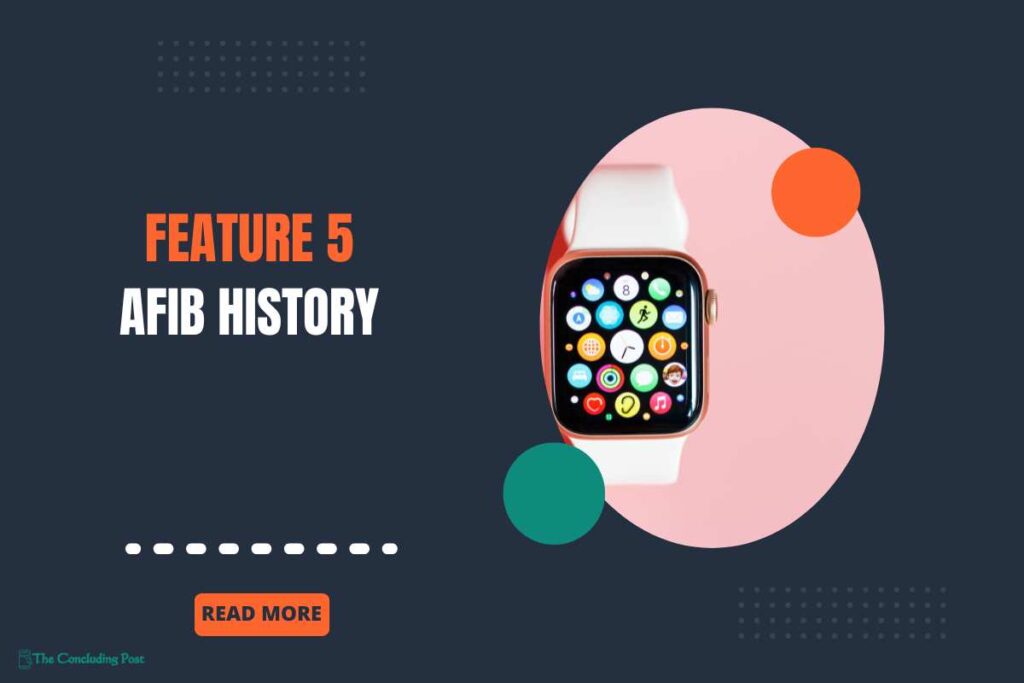
For individuals diagnosed with atrial fibrillation (AFib), the Apple Watch’s AFib History feature offers valuable insights into the frequency and severity of irregular heart rhythms over time. By continuously monitoring heart rate data and detecting episodes of AFib, the Apple Watch empowers users to track their condition, monitor treatment efficacy, and make informed decisions about their cardiac health.
Comprehensive Data Analysis: The AFib History feature analyzes heart rate data collected by the Apple Watch to identify episodes of irregular heart rhythms indicative of AFib. By analyzing the frequency, duration, and severity of AFib episodes, users can gain a comprehensive understanding of their condition and its impact on their cardiovascular health.
How it works: In addition to tracking AFib episodes, the Apple Watch’s AFib History feature offers trends analysis and alerts to notify users of significant changes in their heart rhythm patterns. By identifying trends such as increasing AFib frequency or prolonged episodes, users can proactively manage their condition, seek medical attention when necessary, and adjust treatment strategies as needed.
Now , you might be wondering How you can share all your health related information with your health advisor ??
Dont worry….. Apple has solution for that too as well
AFib data collected by the Apple Watch can be shared with healthcare providers through the Health app, enabling remote monitoring and facilitating collaborative care management. By sharing AFib history and trends with healthcare professionals, users can receive timely clinical interventions, optimize treatment plans, and improve long-term health outcomes.
How it works The AFib History feature allows users to log lifestyle factors such as stress, exercise, and medication adherence, providing valuable insights into potential triggers and exacerbating factors for AFib episodes. By identifying lifestyle patterns and their impact on heart rhythm, users can make informed decisions about behavior modification and lifestyle adjustments to better manage their condition.
Still not impressed????
Let’s talk about some real-life people examples
Real-Life Stories: The Apple Watch in Action
The true impact of the Apple Watch’s health features is best illustrated through real-life stories of individuals whose lives have been saved or improved thanks to its life-saving capabilities. Let’s explore some compelling narratives that highlight the transformative power of the Apple Watch in healthcare:
1. Sneha Saha: Early Detection of Atrial Fibrillation
Sneha Saha, a 35-year-old resident of Delhi, experienced an abnormally high pulse late one evening, prompting concerns about her health. Despite initial attempts to alleviate her symptoms, including drinking water and practicing deep breathing techniques, Sneha’s condition did not improve. In a moment of intuition, she decided to check her heart rate using her Apple Watch Series 7, which detected irregular heart rhythms and alerted her to seek immediate medical attention.
Upon arriving at the hospital, Sneha was diagnosed with atrial fibrillation (AFib), a serious cardiac arrhythmia that can lead to stroke and other complications if left untreated. Thanks to the early detection provided by her Apple Watch, Sneha received timely medical interventions, including cardioversion therapy to restore normal heart rhythm. Her swift action, facilitated by the Apple Watch’s health monitoring features, ultimately saved her life and prevented potentially catastrophic health consequences.
2. Tony Jauncey: Emergency Assistance in Times of Need
Tony Jauncey, an 82-year-old resident of Kidderminster, found himself in a life-threatening situation when he was struck by a car at a roundabout. Despite sustaining multiple injuries, including a broken collarbone and cracked ribs, Tony was able to summon emergency assistance promptly thanks to his Apple Watch Series 6, which automatically triggered a call to emergency services upon detecting a sudden impact.
Within minutes, paramedics arrived at the scene and provided Tony with the critical medical attention he needed to stabilize his condition and transport him to the hospital for further evaluation and treatment. Tony’s experience underscores the importance of wearable technology in facilitating rapid emergency response and ensuring timely access to medical care during unforeseen emergencies.
3. Dr. Rashid Riaz: Remote Health Monitoring on a Flight
Dr. Rashid Riaz, a physician at Hereford County Hospital in England, encountered a medical emergency onboard a Ryanair flight to Verona when an elderly passenger suddenly experienced difficulty breathing. Concerned about the passenger’s deteriorating condition, Dr. Riaz borrowed a flight attendant’s Apple Watch to assess the individual’s oxygen saturation levels and monitor their cardiac status in real-time.
Using the Apple Watch’s health monitoring features, Dr. Riaz was able to detect dangerously low oxygen saturation levels and provide immediate medical interventions, including supplemental oxygen therapy, to stabilize the passenger’s condition until they could be safely transported to a medical facility upon landing. Dr. Riaz’s quick thinking and resourcefulness, facilitated by the Apple Watch’s remote health monitoring capabilities, played a pivotal role in saving the passenger’s life and preventing a potential medical emergency during the flight.
4. Kimmie Watkins: Early Detection of Pulmonary Embolism
Kimmie Watkins, a 29-year-old individual from an unnamed location, experienced symptoms of dizziness and lightheadedness while resting at home one afternoon. Concerned about her worsening condition, Kimmie decided to check her heart rate using her Apple Watch Series 7, which alerted her to a sustained elevation in heart rate exceeding 10 minutes, indicative of a potential medical emergency.
Upon seeking medical attention at the hospital, Kimmie was diagnosed with a saddle pulmonary embolism, a life-threatening condition characterized by a blood clot obstructing blood flow to the lungs. Thanks to the early detection provided by her Apple Watch, Kimmie underwent emergency surgery to remove the blood clot and restore normal blood flow, ultimately saving her life and preventing further complications from the pulmonary embolism.
5. Imani Miles: Discovery of a Neuroendocrine Tumor
Imani Miles, a 12-year-old resident of Queens Borough, New York City, experienced an unexpected health scare when her Apple Watch Series 7 alerted her mother, Jessica Kitchen, to a sustained elevation in heart rate during a routine evening at home. Concerned about the abnormal heart rate reading, Jessica took Imani to the hospital for further evaluation, where they discovered a neuroendocrine tumor on her appendix during surgery.
Subsequent pathology reports confirmed that the tumor was cancerous, highlighting the critical role of early detection facilitated by the Apple Watch’s health monitoring features in diagnosing and treating potentially life-threatening conditions. Thanks to the timely intervention provided by her Apple Watch, Imani underwent successful surgery to remove the tumor and received appropriate medical treatment, ultimately leading to a full recovery and restoration of her health.
To further enhance user engagement and awareness, Apple periodically releases educational content related to heart health through the Apple Watch. These informative articles and videos serve to educate users about the importance of heart rate monitoring and encourage proactive health management practices.

